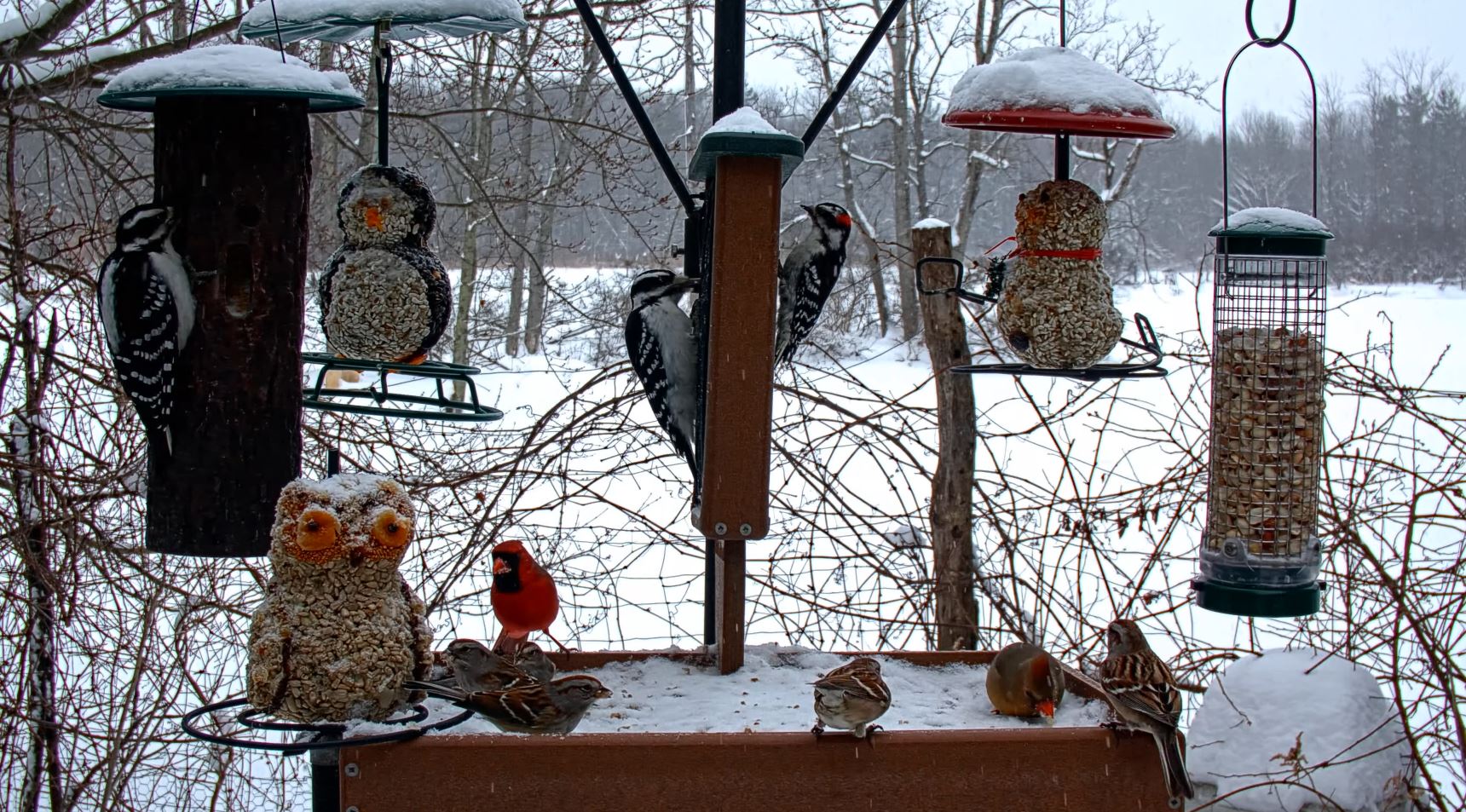Welcome to Cornell Feeders Live!
In this investigation we studied the birds on the Cornell FeederWatch cam, located in the Treman Bird Feeder Garden at the Cornell Lab of Ornithology. Sitting just on the edge of both Sapsucker Woods and its 10-acre pond, these feeders attract forest species like chickadees and woodpeckers as well as some species that prefer open environments near water like Red-winged Blackbirds.
After weeks of discussion and voting, the community of Bird Cams Lab participants and scientists settled on two questions to answer: (1) What is the daily visitation pattern of different species at the feeders? (2) How does weather affect the probability of different species visiting the feeders?
With questions in hand, they tagged data in real time on the Cornell FeederWatch cam for eight bird species: Northern Cardinal, Black-capped Chickadee, Red-bellied Woodpecker, White-breasted Nuthatch, Tufted Titmouse, Blue Jay, American Goldfinch, and Red-winged Blackbird from March 31–April 14, 2021. The scientists pulled precipitation (ex: rain) and temperature data from the nearest weather station to answer the second question, and created a series of visualizations for the community to explore together. They found that species differed in their visitation patterns by date and time of day, but not temperature. You can read about what the community did and what they discovered in the investigation’s Final Report.
